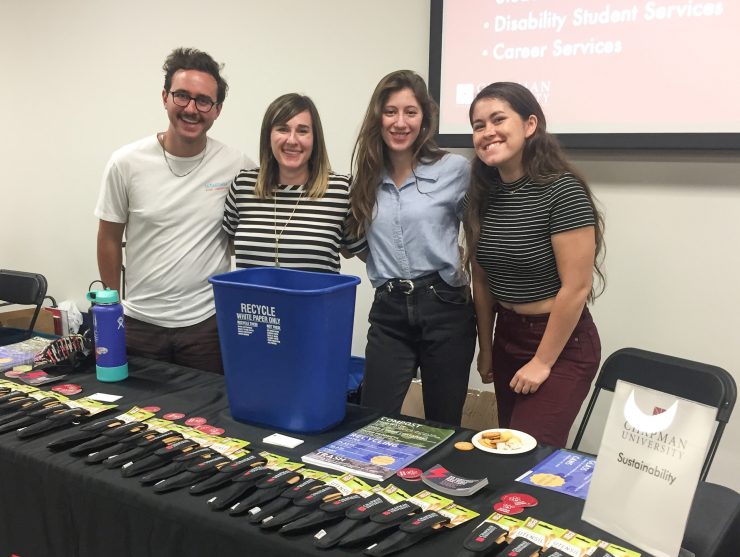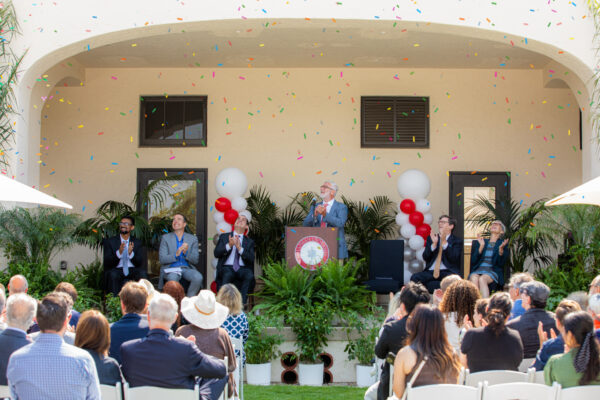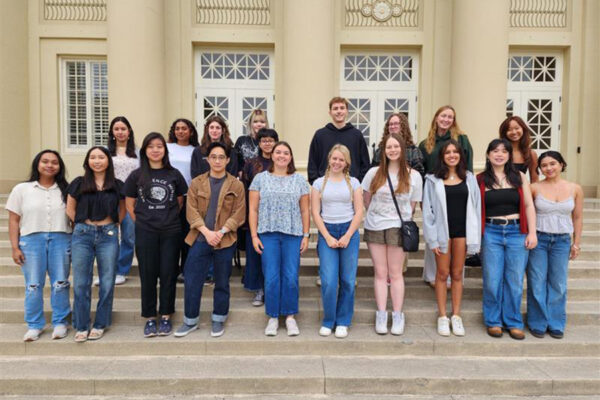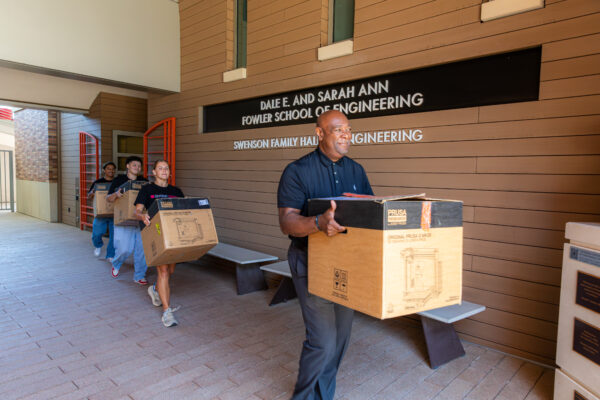The Chapman University campus is eerily quiet from lack of activity. In some ways, it’s a sustainability manager’s dream.
In early March, before stay-at-home orders tightened further, Mackenzie Crigger roamed the all-but-empty halls, tackling tasks of energy efficiency and sustainability.
“Now that students are gone, we’re able to do a lot of stuff that ordinarily would have to wait till summer,” Crigger said. “Our LED project is going much faster now that no one’s around, which is a double-edged sword.”
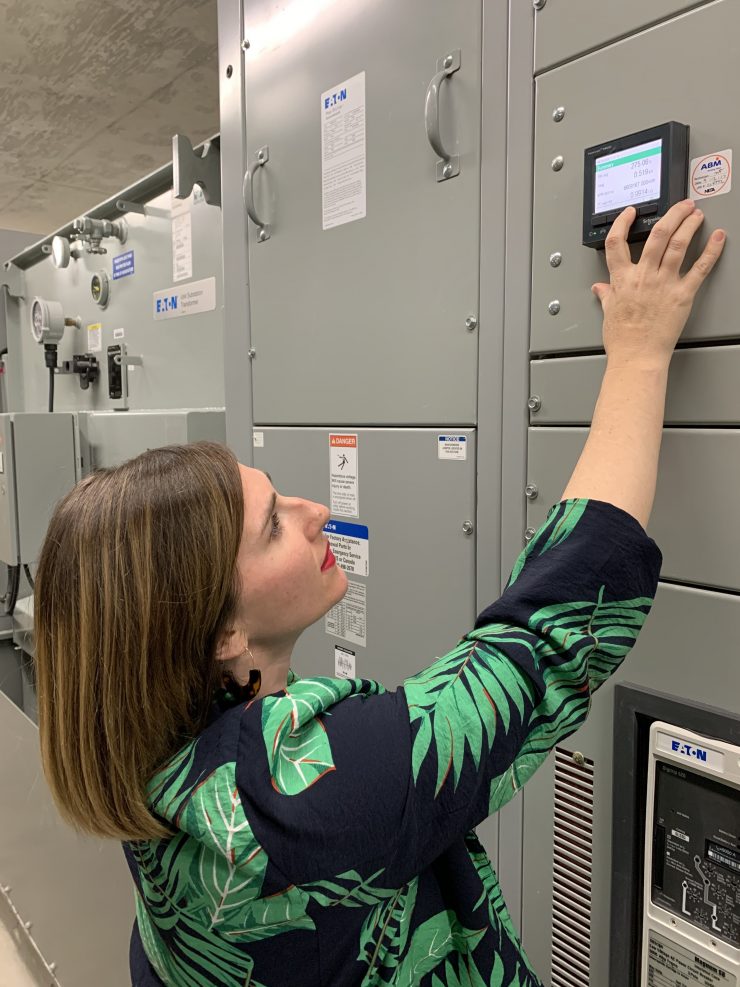
Two months ago, the university community was looking forward to marking the 50th anniversary of Earth Day with a number of events in April, but because of the COVID-19 outbreak, those events had to be canceled. So the chance to sub in more efficient lightbulbs comes at the cost of an opportunity to raise environmental awareness and converse with Chapman’s 8,000 students about issues of sustainability.
Crigger sees a parallel. Just as Earth’s future depends on our ability to advance sustainability, health and safety in the time of COVID-19 depend on the actions of everyone.
“Especially right now because of coronavirus, we think about how our health is in the hands of other people in a very real way,” says Crigger. “I hope that as we move out of this phase, people continue to be mindful about the impact of their own actions, and how small changes can really add up and help make things better for everybody.”
The University’s Goals
Improving sustainability and energy efficiency at a university, especially one with many historic buildings, is no small feat.
In the Chapman Grand student housing complex, replacing all inefficient CFL lightbulbs will have a great impact. Nearly 75% of the energy used to run a CFL bulb produces heat, not light. With this update, students will run their air conditioning less, saving energy.
Crigger’s other current initiative is to install energy-efficient window films in Beckman Hall. Sunlight heats the south side of the building, causing the AC system to go into overdrive, overcooling the shady north side of the building.
“It was miserable. I was in there with a sweater and a Snuggie, and it was summer,” said Crigger.
Sustainability efforts at Chapman are not only about changing physical spaces. They’re also about educating and motivating.
Jamie Larkin, chair of the university’s Sustainability Committee and an assistant professor of creative and cultural industries at Wilkinson College, looks forward to revamping general education courses to highlight sustainability and environmental awareness.
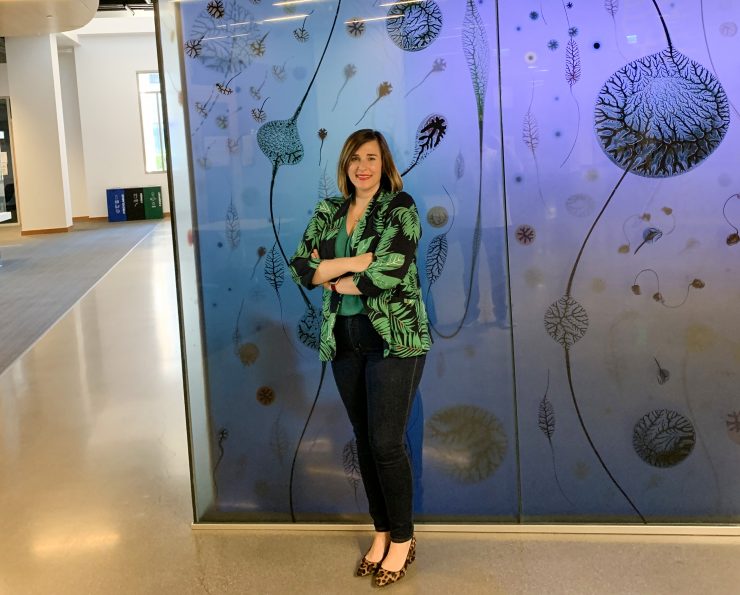
Making Sustainability More Visible
“As a faculty, we’re looking at how we can make sustainability more visible, and signal to students where to go if they’re interested in looking at this idea,” Larkin said.
Plans are in place to assess syllabi and help interested professors find ways to incorporate sustainability into their courses.
Students are also engaged in sustainability issues, and they aren’t afraid to talk about them, Larkin said. Before arriving at Chapman, Larkin had no idea about the significant ecological impact of “fast fashion” – inexpensive clothes typically made overseas.
“It’s only through conversations with students that I’ve been informed,” he said. “Now we’re offering a course on creative and cultural industries and sustainability that will help students think about how fashion, music, theme parks – all of these creative industries – think about sustainability.”
As a professor of biological sciences who teaches in the Environmental Science and Policy program at Chapman, Jason Keller says he wants students to bring a range of perspectives to the search for environmental solutions.
“We’re trying to educate students so they identify as scientists but can understand policy implications, and simultaneously to create policymakers who ground their work in science,” he said.
The COVID-19 outbreak has, in some ways, made it easier to step back and take a closer look at the cost of carbon emissions in our modern lives.
“A silver lining is that it’s kind of a massive social experience in which we will see what the effects of human activity have on the environment,” Larkin said. “It is a dry run to how people might change their lives in regard to climate change.”
